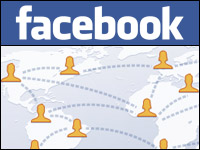
Cingular and AT&T Wireless recently announced plans to merge, resulting in a bigger, more reliable network for customers. Not long after, Consumers Union and the Consumer Federation of America filed a petition to block the merger. Once again, so-called consumer groups are opposing market developments that help consumers.
The push comes in an area that, until recently, was largely left alone by regulators and special interest groups. And the results of that “hands off” policy speak for themselves. In the wireless industry, prices have fallen, and the technology has spread to all segments of the population. Yet this phenomenal success appears to disturb those who claim to speak for the consumer.
“This merger proposes an unacceptable level of concentration at the national level,” cried the groups. But regulators should see that these arguments are more akin to the boy who cried wolf than a real cause for concern.
In a Competitive Market
Anyone with a cell phone knows that, in the wireless market, individuals can choose from many different packages, prices, gadgets and so on. Indeed, some 78 percent of Americans have a choice among five or more wireless companies.
But “Cingular and AT&T Wireless are the second and third largest carriers nationally,” cried the groups again. “Tell that to Verizon,” regulators should respond. The new combined company would have 28 percent market share, compared with Verizon’s 24 percent. This strong competition for Verizon should help speed up innovation and reduce the infamous dead zones that frustrate wireless users everywhere.
Consumers Union spokesperson Chris Murray argued the merger would lead to higher prices for wireless customers. “We can expect to see fewer deals and higher prices,” he said. In reality, combining the two companies is likely to provide US$1 billion in savings by 2006 and more than twice that starting in 2007.
It’s not rocket science; it’s Econ 101. When a company saves money, it will pass that savings along to the customer in a competitive market. And to all but the willfully blind, it is a competitive market.
Next-Gen Wireless
The proposed merger between Cingular and AT&T Wireless is the first big step toward delivering a new generation of technology and services. A larger actor with greater resources will be able to roll out services more quickly and less expensively.
Current wireless e-mail, for example, does not allow for the attachment of documents — Word, spreadsheets, PDF and so on. In other words, the Net’s killer app isn’t quite so killer yet. The next generation of wireless will correct this.
It will also, courtesy of GPS, allow more advanced automated mapping coupled with directory services and related services, access to greater amounts of information, and greater numbers of services generally, all enhanced by 3D imaging, streaming video, full-motion video and high-speed access. It is in the public interest to see these advanced services rolled out more quickly.
And then there’s the spectrum issue.
Anyone who’s been following the spectrum debates knows this valuable resource is at a premium. The Cingular-AT&T Wireless merger will give the new company spectrum in 49 states and on-network coverage in 97 of the 100 top markets. What does this mean for consumers?
The Premium Spectrum
An improved spectrum position in many key markets will improve call quality and lay the foundation for a quicker rollout of next-generation wireless data services than either company could accomplish on a stand-alone basis. This will directly benefit customers.
But whether these advances happen at all depends on whether the FCC and the U.S. Department of Justice approve the merger.
President Bush recently said he wants to see ubiquitous broadband rollout in America by 2007. The only way the industry is going to provide that is if regulators get out of the way and allow the market to work. Consumer groups can help by focusing their energies on harmful regulation rather than those that produce helpful new technologies.
The day will come when there are high-speed wireless hotspots everywhere, but how hard it will be to get there is the question. Getting there more quickly and easily is obviously better. America’s competitiveness depends on it.
Sonia Arrison, a TechNewsWorld columnist, is director of Technology Studies at the California-based Pacific Research Institute.











































